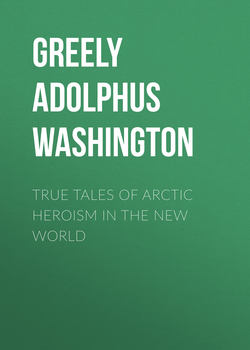Читать книгу True Tales of Arctic Heroism in the New World - Greely Adolphus Washington - Страница 1
PREFACE
ОглавлениеFrom the dawn of history great deeds and heroic actions have ever fed the flame of noble thought. Horace tells us that
By Homer taught the modern poet sings
In epic strains of heroes, wars and kings.
The peace-aspiring twentieth century tends toward phases of heroism apart from either wars or kings, and so the heroic strains of the "True Tales" appear in the unwarlike environment of uncommercial explorations.
One object of this volume is to recall in part the geographic evolution of North America and of its adjacent isles. The heroic-loving American youth is not always familiar with the deeds of daring, the devotion to duty, and the self-abnegation which have so often illumined the stirring annals of exploration in arctic America.
Notable exemplars of heroic conduct have already been inscribed on the polar scroll of immortals, among whom are Franklin and McClintock, of England; Kane, of America; Rae, of Scotland; and Mylius-Erichsen, of Denmark. Less known to the world are the names Brönlund, Egerton and Rawson, Holm, Hegemann, Jarvis and Bertholf, Kalutunah, Parr, Petitot, Pim, Richardson, Ross, Schwatka and Gilder, Sonntag, Staffe, Tyson and Woon, whose deeds appear herein. As to the representative women, Lady Jane Franklin is faintly associated in men's minds with arctic heroism, while Merkut, the Inuit, has been only mentioned incidentally. Yet all these minor actors have displayed similar qualities of courage and of self-sacrifice which are scarcely less striking than those shown in the lives of others who are recognized as arctic heroes.
The "True Tales" are neither figments of the fancy nor embellished exaggerations of ordinary occurrences. They are exact accounts of unusual episodes of arctic service, drawn from official relations and other absolutely accurate sources. Some of these heroic actions involve dramatic situations, which offer strong temptations for thrilling and picturesque enlargements. The writer has sedulously avoided such methods, preferring to follow the course quaintly and delightfully set forth by the unsurpassed French essayist of the sixteenth century.
Montaigne says: "For I make others to relate (not after mine own fantasy, but as it best falleth out) what I cannot so well express, either through unskill of language or want of judgment. I number not my borrowings, but I weigh them. And if I would have made their number to prevail I would have had twice as many. They are all, or almost all, of so famous and ancient names that methinks they sufficiently name themselves without me."
The "Tale" of Merkut, the daughter of Shung-hu, is the only entirely original sketch. The main incident therein has been drawn from an unpublished arctic journal that has been in the writer's possession for a quarter of a century. This character – a primitive woman, an unspoiled child of the stone age – is not alone of human interest but of special historic value. For her lovely heroic life indicates that the men and women of ages many thousands of years remote were very like in character and in nature to those of the present period.
A. W. Greely.
Washington, D. C., August, 1912.
